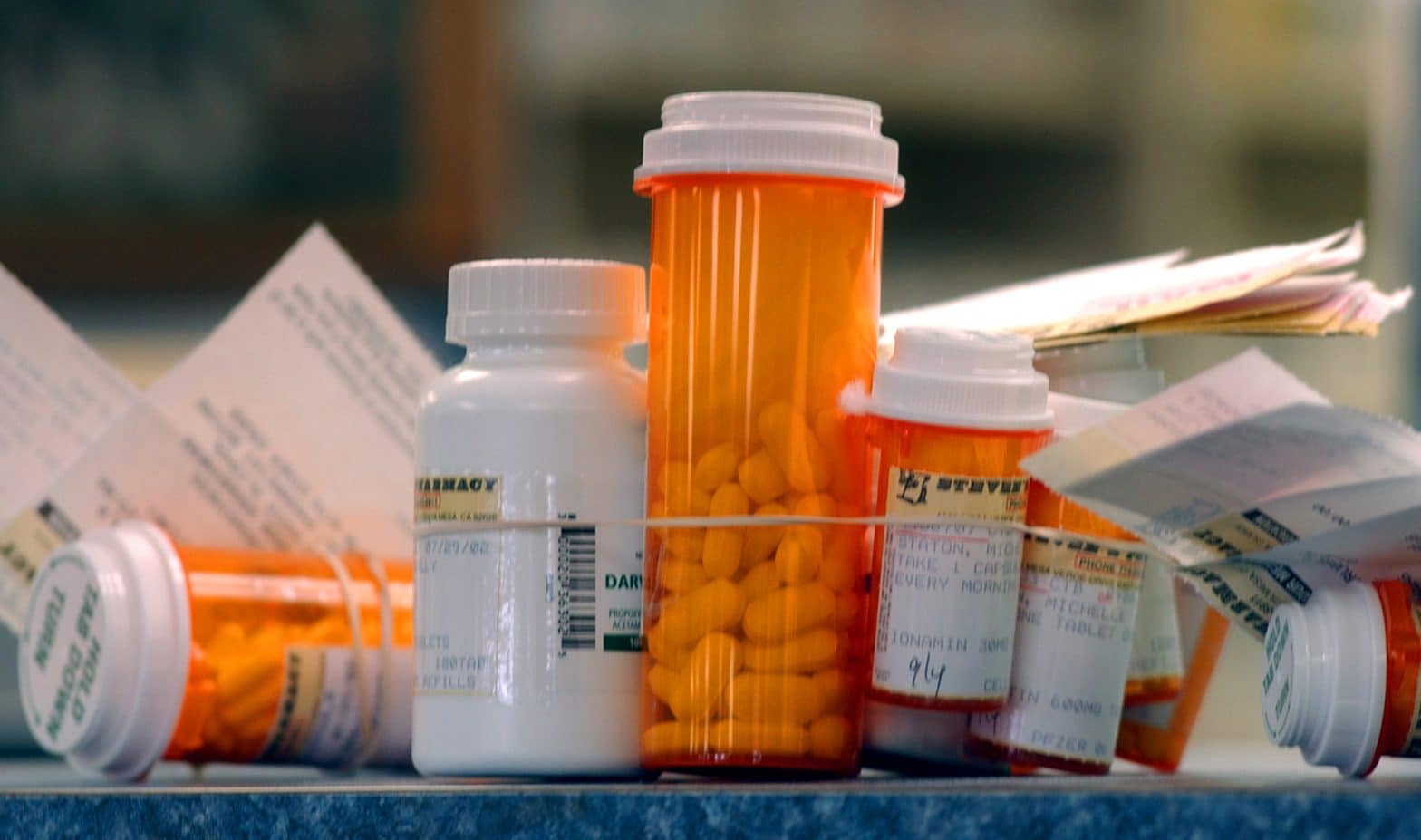With Encouragement From Trump, States Move Forward on Importing Drugs

WASHINGTON — The Trump administration Wednesday announced plans that would pave the way for Americans to begin purchasing lower priced prescription drugs imported from Canada.
Health and Human Services Secretary Alex Azar described two ways in which the administration proposes to loosen long-standing federal policy that prevents the importation of drugs from overseas. He called the effort “one of the highest priorities we have in the administration.”
For years, the importation of cheaper versions of drugs already sold here has been a cherished goal of consumer advocates and others. But federal resistance, from both Republican and Democratic administrations, has always stood in the way, at least in part because of full-throated opposition from drugmakers.
In anticipation of Trump’s policy reversal on importation, some states already had taken steps that would allow them to begin importing medications from Canada once they received federal permission.
“@SecAzar and I will soon release a plan to let Florida and other States import prescription drugs that are MUCH CHEAPER than what we have now!” Trump tweeted shortly before Thanksgiving, at the time his most emphatic statement on the subject since his Department of Health and Human Services last summer announced proposals to tackle the issue. Media reports have credited Florida Republican Gov. Ron DeSantis for persuading the president on the issue, and DeSantis planned to appear Wednesday at an announcement on the proposal.
Four states — three this year (Colorado, Florida and Maine) — have passed legislation to allow for importing medicines from Canada, and two of them, Florida and Vermont, submitted proposals to HHS. More than two dozen other states either have or are considering their own legislation.
“America pays the highest drug prices on the planet,” said Republican state Sen. Aaron Bean of Florida, who sponsored the importation bill there. Importation, he said, would create competition “we believe could change the whole market.”
Some analysts are skeptical about that. They point out that there might be a limited supply of drugs from Canada, especially if manufacturers keep stocks low to prevent too many Americans from getting them at cheaper, north-of-the-border prices.
“If you are a single supplier of a drug, why would you give Canada so much of a medication that you know they are going to turn around and send the excess supply to Florida?” said Dr. Aaron Kesselheim, a professor at the Harvard Medical School who studies the drug industry.
“They’d end up competing against themselves.”
And Azar told reporters in a call that he couldn’t predict the savings, according to The Washington Post, because he didn’t know how many states would set up programs.
Jane Horvath, a Washington, D.C.-based consultant who works with states on prescription drug issues, said importation is merely one piece of a larger drug price puzzle.
“Importing from Canada is not sustainable,” Horvath said, “because if more and more American states allow importation, it could quickly exhaust the supply Canada had on hand to re-export to the U.S.”
Other importation opponents, including the pharmaceutical industry, argue that it won’t be possible to ensure the safety and security of prescription drugs that flow through third countries, even Canada.
Prescription drugs are cheaper in Canada because that government establishes a ceiling based on the price paid in Europe and the United States. If the price exceeds the ceiling, the Canadian government negotiates with the manufacturer to bring down the cost.
In the U.S., unlike most of the rest of the world, manufacturers are free to set their own prices, with no ceilings or price controls established by government. As a result, the difference between what Americans and Canadians pay for the exact same drug can be vast.
For example, according to a 2017 analysis by the National Academy for State Health Policy (NASHP), a nonpartisan forum where state health policymakers explore innovations, the price of a dose of the multiple sclerosis drug Tecfidera was $119 in the United States and $11.92 in Canada. Similarly, the pulmonary hypertension drug Tracleer was $173 here and $47 there.
The academy’s analysis of 17 high-cost drugs covered by two of three insurers operating in Vermont estimated an annual total savings to the carriers of $1 million to $5 million with drug importation, even with an estimated 45% markup. NASHP estimated savings of up to 70% on some drugs.
Many experts such as Kesselheim agree that consumers could save money on the importation of some high-priced medications, particularly those with expired patents.
The Trump administration envisions two pathways for importation. The more impactful one, at least initially, would allow states, wholesalers or pharmacists to propose pilot programs to import from Canada certain drugs that are virtually identical to FDA-approved drugs already sold in the United States. The administration is reportedly drafting rules that would govern how those importation plans would work, but Florida and Vermont have filed their own plans with HHS.
The other pathway would allow manufacturers to import from other countries’ lower-cost versions of the FDA-approved drugs they already sell. These imports would not be subject to manufacturers’ contracts with distributors and other middlemen, such as pharmacy benefit managers who administer pharmacy benefits on behalf of insurers. Presumably, drugs in this category would be offered to patients at lower prices.
The political pressure to do something about prescription drug prices has become unavoidable. A recent survey by the Kaiser Family Foundation found that 3 in 4 Americans see the cost of prescription drugs as “unreasonable.”
Last week, the U.S. House approved a prescription drug bill that would allow Medicare to negotiate drug prices, allow private insurers to buy drugs at Medicare’s negotiated price, prohibit drug price increases beyond the rate of inflation, and cap seniors’ out-of-pocket spending on prescription drugs at $2,000 annually.
The legislation does not address drug importation, and Trump has pledged to veto it if it reaches his desk, preferring a Senate bill that would cap price increases for drugs in Medicare but would not permit the government to negotiate prices.
Almost all states have considered a drug-pricing measure in the last four years, many of them focused on importation. By NASHP’s count, since 2015, 33 states have examined proposals on importation. Maine, Colorado and Florida passed laws this year, joining Vermont, which enacted its importation law in 2018.
Vermont submitted its plan for importation with HHS this month. In a report this summer, the state said with the additional oversight it intends to provide and current federal laws, importation “pose(s) no additional risk to the public’s health and safety.” Florida submitted its own plan this summer.
Some states, such as Florida, would allow only public health programs such as Medicaid and prison health care to import drugs, at least initially. Other states, such as Vermont, want to allow commercial insurers to import as well.
Florida’s DeSantis included $20 million in the budget to cover the cost of an importation program, which would pay for a vendor to administer the program and additional testing and inspections. Last week, the head of the state’s Medicaid agency said she expects the importation program will save the state $150 million a year.
The main impediment to the importation of drugs from other countries is a federal law — the Food, Drug and Cosmetic Act — that prevents the importation of drugs whose manufacture, distribution and labelling have not been approved by the Food and Drug Administration.
Exceptions are made if the HHS secretary certifies a drug’s importation would pose no additional health and safety risks and would offer “significant reduction in costs” to U.S. consumers. No such certification has ever been issued.
However, many FDA-approved drugs are manufactured overseas. The agency is supposed to ensure foreign-made drugs are safe, effective and produced in an FDA-registered factory. It also monitors the sources of the ingredients and requires that they pass through transit points that observe safety standards.
Also, medication labels must follow FDA rules. Drugs exported to Canada don’t use U.S. drug codes, which regulators use to track the transport of medications. The Trump administration said it is developing new rules in those areas to accommodate importation.
NASHP, which has written model state legislation on importation, insists that importing medications can be done safely.
“Right now, 40% of the drugs sold in the U.S. are imported and 80% of the ingredients used in U.S. drugs come from abroad,” said Trish Riley, NASHP’s executive director. “So why is this even an issue?”
But Pharmaceutical Research and Manufacturers of America, the drugmaker trade group in Washington known as PhRMA, argues that the administration’s plan is “far too dangerous for American patients.”
Gerard Anderson, a professor at the Johns Hopkins Bloomberg School of Public Health, agrees.
“I am suspicious that with importation you can guarantee the safety of the distribution networks through other countries,” Anderson said.
Republican state Sen. Jim Smallwood of Colorado also cited safety in opposing an importation bill in his state.
“If you support something like this, you’re supporting conceding to a foreign power the efficacy and safety of drugs sold in the United States,” Smallwood said. “I’m not willing to do that.”
———
©2019 Stateline.org
Visit Stateline.org at www.stateline.org
Distributed by Tribune Content Agency, LLC.
























